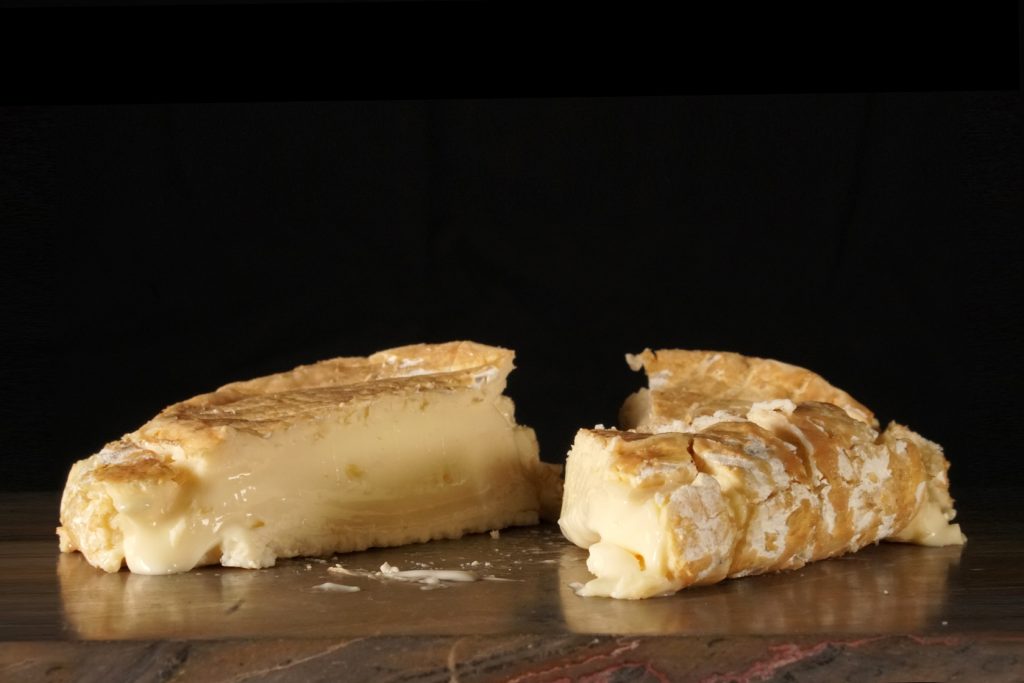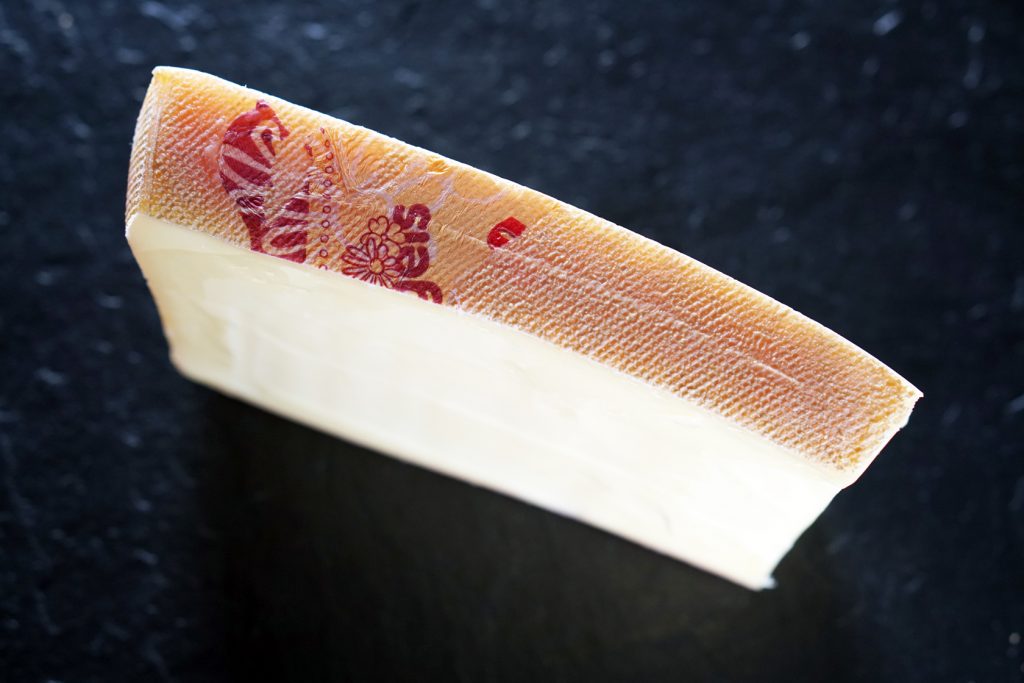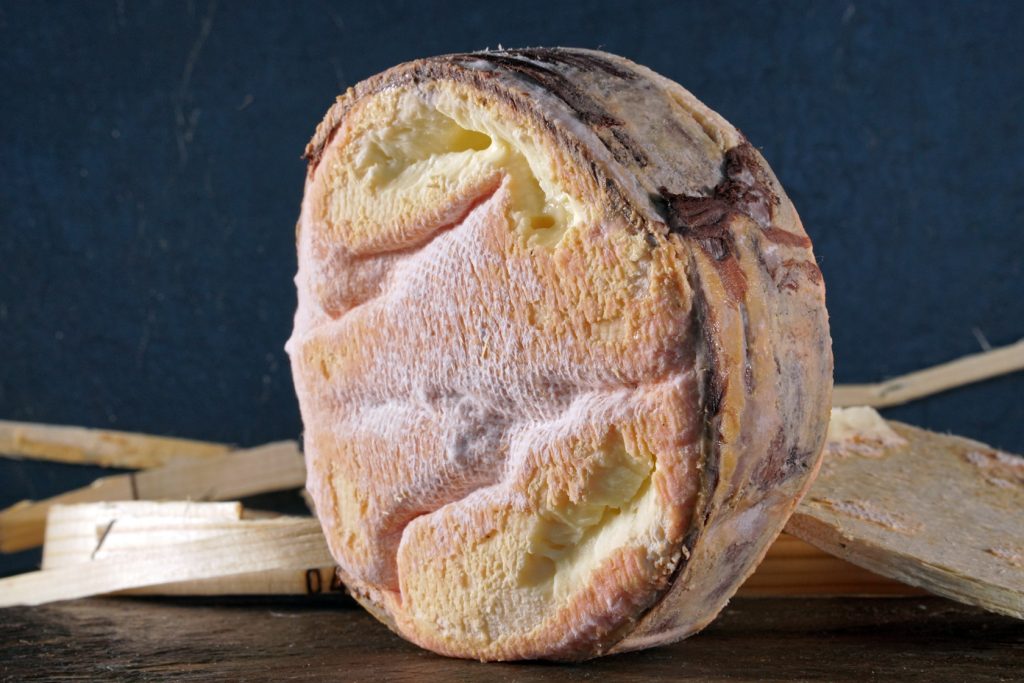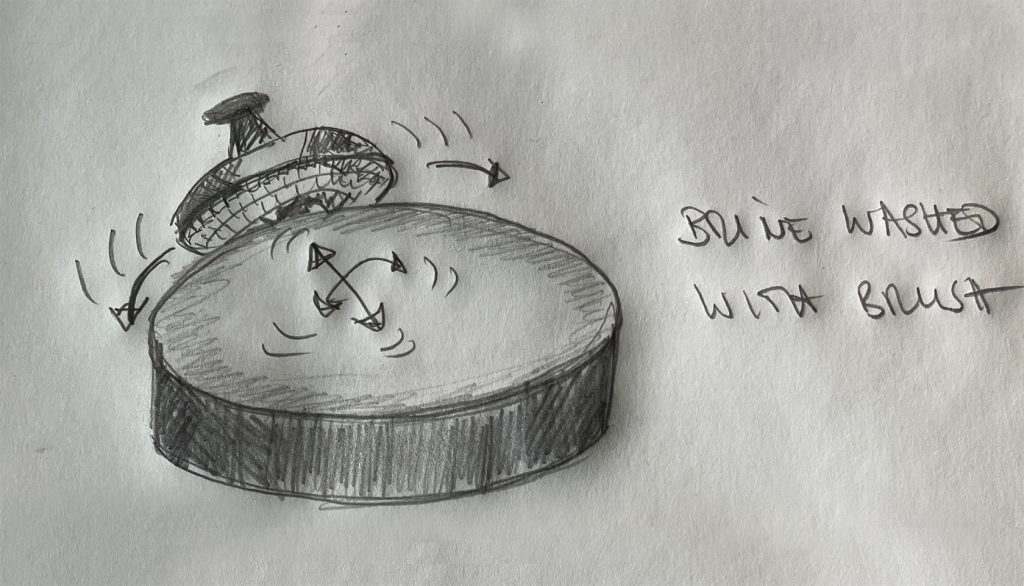I don´t know how you feel, but Gustav and I often get confused around the term “washed rind cheese”.
There are long ripened, hard cheeses like *Gruyère* from Switzerland that are called washed rind cheese and then there are the little soft ones like *Livarot* from France that are also called washed rind cheese.
But are they really called by the same name or is it just the result of a category simplification? The answer is, as so often – “ Yes .. and No”
Whereas bigger wheels of cheese, such as the above mentioned *Gruyère* or an *Appenzeller*, actually get washed in the old style sense of being treated with a wet brush, the smaller versions such as french *Livarot* or belgian *Herve* are hand smeared.

 Both have in common that they are brined, meaning that, no matter whether they are big or small, they are treated with a brine solution and are bacterial surface-ripened cheeses that therefore ripen from the outside to the inside.
Both have in common that they are brined, meaning that, no matter whether they are big or small, they are treated with a brine solution and are bacterial surface-ripened cheeses that therefore ripen from the outside to the inside.
Washed rind – smear ripened cheeses
Quick facts:
- ripening is initiated by bacteria (rather than mold)
- growth of bacteria is encouraged by washing/smearing the rind repeatedly with a brine solution
- uses bacteria such as Brevibacterium Linens and yeasts such as Geotrichum Candidum to produce carotenoid pigments which give the rind its typical colors of dark orange and/or a reddish deep brown.
- Depending on the type of cheese up to 10 different kinds of yeasts can be found. While B.Linens is intentionally put into the brine it is in fact not the dominating bacteria. Many other bacteria romping around the surface come from the surroundings, eg. the wooden shelves or some neighboring cheeses.
- Hard, surface-ripened cheeses (Gruyère, Beaufort) are produced with the use of thermophilic starter cultures whereas soft surface-ripened cheeses are made with mesophilic cultures (Taleggio, Époisse) .
- The aromas, especially of the small representatives, are pungent (due to sulfides, thiols, branched-chain acids) with barnyard and meaty flavor.
- For the small smear ripened cheeses, besides salt and water, often cider, beer, wine or spirits are used for the brine solution.

For instance – *Époisse* (smeared with Marc de Bourgogne), *Herve* (beer smeared), *Stinking Bishop* (smeared with pear cider)
- Ripening temperature is between 10-15°C at a high relative humidity which prevents the loss of moisture and the drying out of the surface.
- Maturing takes 4-8 weeks for the little ones and 6months + for the big Smears.
Conclusion:
Although *washed* sounds clean and *smear* sounds sticky, both representatives of big and small have a similarly sticky rind. The smaller the cheese, the more effect the brine has on the aroma and flavor profile of the cheese.
So, to be on the super safe-, and obviously cheese nerdy-, side the correct term that includes big and small sized brine-treated cheeses alike would be “bacterial surface-ripened cheese”.
Haha – right?



Gustav says he knows how to solve the dilemma and suggests to stick to whatever pickles your mind first.
Sources:
The Oxford Companion to Cheese, Oxford University Press
Fundamentals of Cheese Science, Springer Verlag
Nose Dive, Harold McGee, Penguin Press








